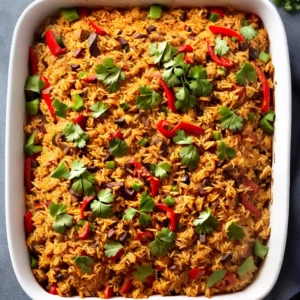How Many Cups Are in a Pint
Welcome to my measurement conversion guide, where I’ll break down just how many cups are in a pint, helping you cook and bake with confidence.
Knowing the conversion between cups and pints is essential for successful cooking and baking. Whether you’re following a recipe or experimenting in the kitchen, understanding these measurements will ensure accuracy and delicious results.
- There are 2 cups in 1 pint, as confirmed by multiple reliable sources.
- A cup is equivalent to 8 fluid ounces, while a pint is 16 fluid ounces.
- Cups became a standardized unit of measure in 1896, thanks to Fannie Farmer.
- It’s important to note that there is a difference between the US pint and the UK pint, with the UK pint being larger.
- When measuring liquid ingredients, a measuring cup with a spout is ideal, while for dry ingredients, a flat top measuring cup is preferred.
- A conversion chart for cups to pints, quarts, and gallons is as follows: 1 cup = ½ pint, 2 cups = 1 pint, 4 cups = 1 quart, and 16 cups = 1 gallon.
- A dry pint is equivalent to 18.6 US fluid ounces or 2.325 cups.
Key Takeaways – How Many Cups Are in a Pint:
- 1 pint is equal to 2 cups, with each cup containing 8 fluid ounces.
- US and UK pints differ in size, so make sure to use the appropriate measurement for your recipe.
- Use a measuring cup with a spout for liquid ingredients and a flat top measuring cup for dry ingredients.
- Memorize the conversion chart to easily convert between cups, pints, quarts, and gallons.
- A dry pint is commonly used in certain recipes and is equivalent to 18.6 US fluid ounces or 2.325 cups.
Understanding Cups and Pints
Before we dive into the conversion, let’s take a moment to understand the significance of cups and pints in the world of cooking and baking.
Cups and pints are common units of measurement used in recipes. They help us accurately portion ingredients and ensure that our dishes turn out just right. Whether you’re baking a cake or cooking a savory dish, understanding cups and pints is essential for achieving delicious results.
Did you know that the concept of cups as a standardized unit of measure can be traced back to Fannie Farmer in 1896? Her cookbook, “The Boston Cooking-School Cook Book,” was one of the first to introduce standardized measurements in recipes. Since then, cups have become a fundamental tool in every kitchen.

The Difference Between US Pint and UK Pint
It’s important to note that there is a difference between the US pint and the UK pint. In the US, a pint is equal to 16 fluid ounces or 2 cups. However, in the UK, a pint is slightly larger, measuring at 20 fluid ounces or 2.5 cups. When following recipes, make sure to use the correct measurement based on your location.
Now that we have a better understanding of cups and pints let’s move on to the conversion between these two measurements.
The Conversion: Cups to Pints
Now, let’s get down to business and unveil the exact conversion between cups and pints, so you can confidently follow any recipe. It’s important to know this conversion because cups and pints are common units of measurement in cooking and baking. Whether you’re measuring liquids or dry ingredients, understanding the relationship between cups and pints will ensure accurate and successful results.
So, how many cups are in a pint? A pint contains 2 cups. This conversion is based on the standard measurement of 8 fluid ounces per cup and 16 fluid ounces per pint. Knowing this conversion will allow you to easily scale recipes up or down depending on your needs.
To help you visualize the conversion between cups and pints, here’s a handy table:
| Cups | Pints |
|---|---|
| 1 | 1/2 |
| 2 | 1 |
| 4 | 2 |
| 8 | 4 |
| 16 | 8 |
Having this conversion chart on hand will make it easy for you to convert between cups and pints as you cook and bake. Remember, accuracy in measurements is key to achieving delicious and consistent results in your culinary creations. Happy cooking!
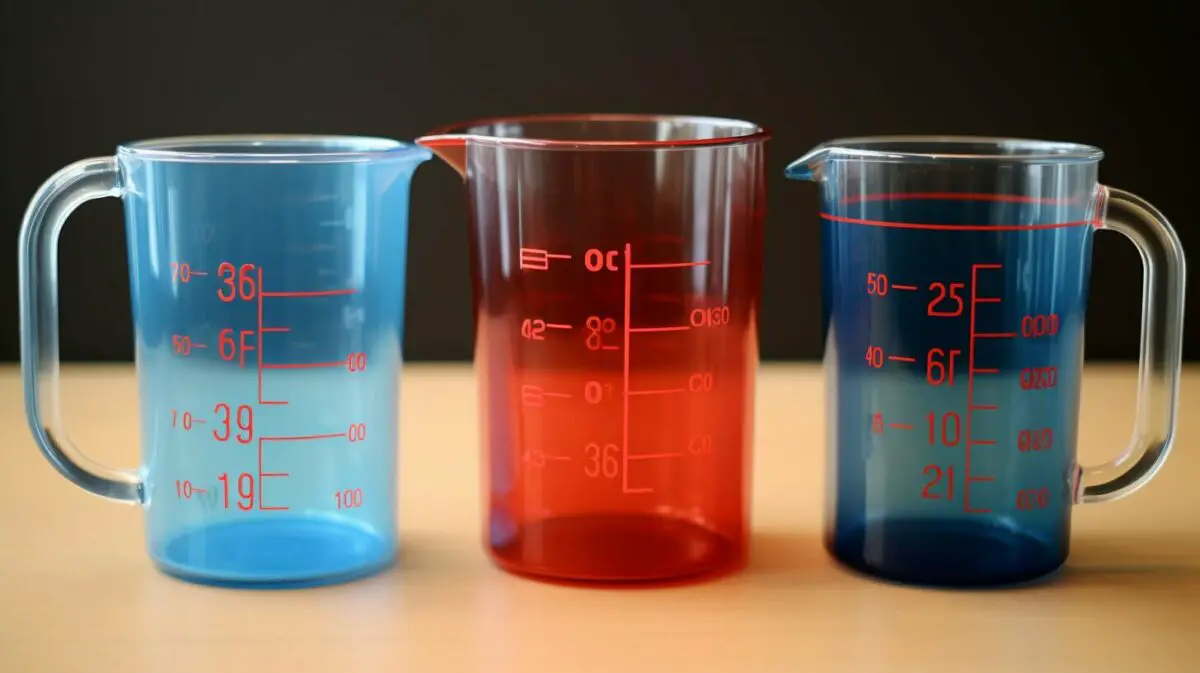
Using Measuring Cups
To ensure precise measurements, it’s crucial to choose the right measuring cup for the type of ingredient you’re working with. When measuring liquid ingredients, a measuring cup with a spout is the best option. This design allows for easy pouring and prevents spills. For dry ingredients, a flat top measuring cup is preferred. This type of cup allows you to level off the ingredient with a straight edge, ensuring accurate measurements.
When using a measuring cup, it’s important to fill it to the appropriate level. For liquid ingredients, such as water or milk, fill the cup to the desired measurement line, making sure the liquid is level. For dry ingredients, such as flour or sugar, spoon the ingredient into the cup until it is overflowing, then use a straight edge to level off the excess.
Here’s a handy tip: when measuring sticky substances like honey or peanut butter, lightly coat the measuring cup with cooking spray or oil. This will make it easier for the ingredient to slide out of the cup and give you a more accurate measurement.
In summary, using the right measuring cup for liquid and dry ingredients is essential for accurate measurements in cooking and baking. By following these tips, you can ensure your recipes turn out perfectly every time.

| Ingredient | Liquid | Dry |
|---|---|---|
| Water | Measuring cup | X |
| Milk | Measuring cup | X |
| Flour | X | Measuring cup |
| Sugar | X | Measuring cup |
Cups to Pints Conversion Chart
Need a handy conversion chart? Look no further! Here’s a quick reference guide to convert cups to pints, quarts, and gallons. Knowing how to convert between these common units of measurement is essential for successful cooking and baking.
| Cups | Pints | Quarts | Gallons |
|---|---|---|---|
| 1 | 1/2 | 1/4 | 1/16 |
| 2 | 1 | 1/2 | 1/8 |
| 4 | 2 | 1 | 1/4 |
| 8 | 4 | 2 | 1/2 |
| 16 | 8 | 4 | 1 |
As you can see from the chart, 1 cup is equal to 1/2 pint, 2 cups are equal to 1 pint, 4 cups are equal to 1 quart, and 16 cups are equal to 1 gallon. These conversions are based on the standard measurement of 8 fluid ounces per cup and 16 fluid ounces per pint.
Understanding these conversions is crucial for following recipes accurately and achieving the desired results in your culinary creations. Whether you’re a seasoned chef or a beginner in the kitchen, having a conversion chart on hand can save you time and ensure your measurements are spot on.
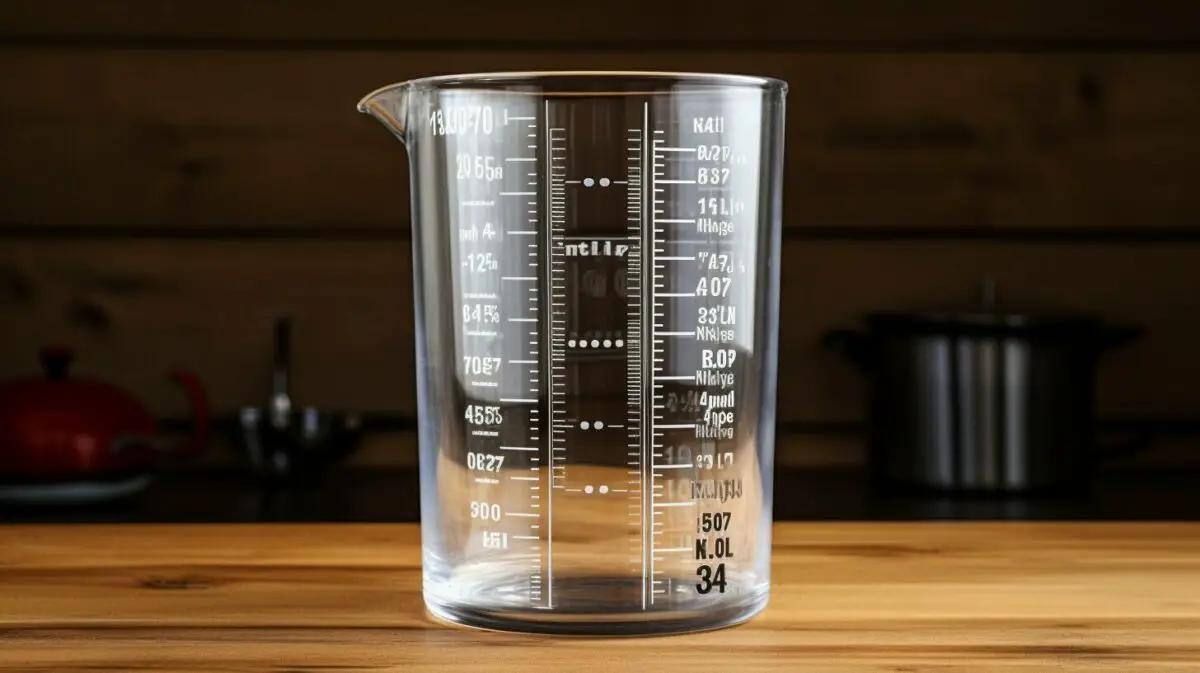
So next time you’re cooking or baking and need to convert between cups and pints, refer to this handy chart. It will make your culinary adventures a breeze!
The Dry Pint
You might come across the term “dry pint,” and it’s essential to understand its meaning for accurate measurements in certain recipes. When it comes to measuring ingredients, especially for cooking and baking, precision is key. A dry pint is a unit of measurement used specifically for dry ingredients like grains, legumes, and certain fruits or vegetables. It is important to note that a dry pint is different from a liquid pint.
So, how much is a dry pint exactly? A dry pint is equivalent to 18.6 US fluid ounces or approximately 2.325 cups. It is slightly larger than the standard liquid pint, which contains 16 fluid ounces or 2 cups. By using a dry pint measurement, you can ensure accurate proportions in your recipes, particularly when dealing with ingredients that have different densities and moisture content.
| Dry Pint | US Fluid Ounces | Cups |
|---|---|---|
| 1 | 18.6 | 2.325 |
When working with dry ingredients, it is crucial to use the appropriate measuring tools. A flat top measuring cup is recommended for accurately measuring dry ingredients like flour, sugar, or rice. This type of measuring cup allows you to level off the ingredient, ensuring consistency and precision in your recipes.
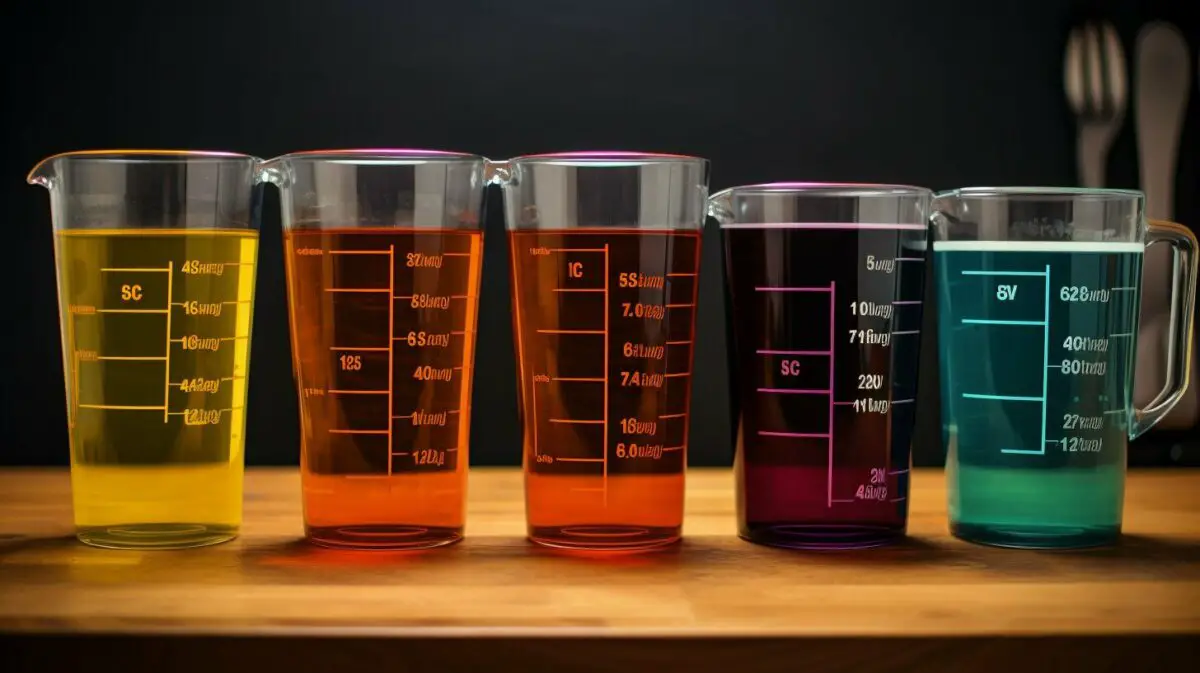
Understanding the concept of a dry pint and its conversion to fluid ounces and cups can greatly improve your ability to follow recipes and achieve desired results. Whether you’re measuring grains for a hearty soup or determining the proper amount of dried fruit for a delicious baked treat, knowing the difference between a dry pint and a liquid pint is essential for accurate measurements in your culinary adventures.
Pint-Sized Measurements
Ever wondered why some ice cream containers or beer glasses are called “pint-sized? Let’s unveil the mystery behind these measurements. A pint-sized measurement is a common term used to describe a specific volume or portion size, typically equivalent to one pint or 16 fluid ounces.
When it comes to ice cream, pint-sized containers are a popular choice for packaging. They allow consumers to enjoy a generous serving of their favorite frozen treat without having to commit to a larger quantity. Whether it’s a classic flavor or a gourmet creation, a pint-sized ice cream container is perfect for indulging in a single sitting.
Glasses of beer are another example of pint-sized measurements in action. In many countries, including the United States, a pint glass typically holds 16 fluid ounces of beer. This standard measurement allows bartenders and beer enthusiasts to pour a proper serving while maintaining consistency across different establishments.
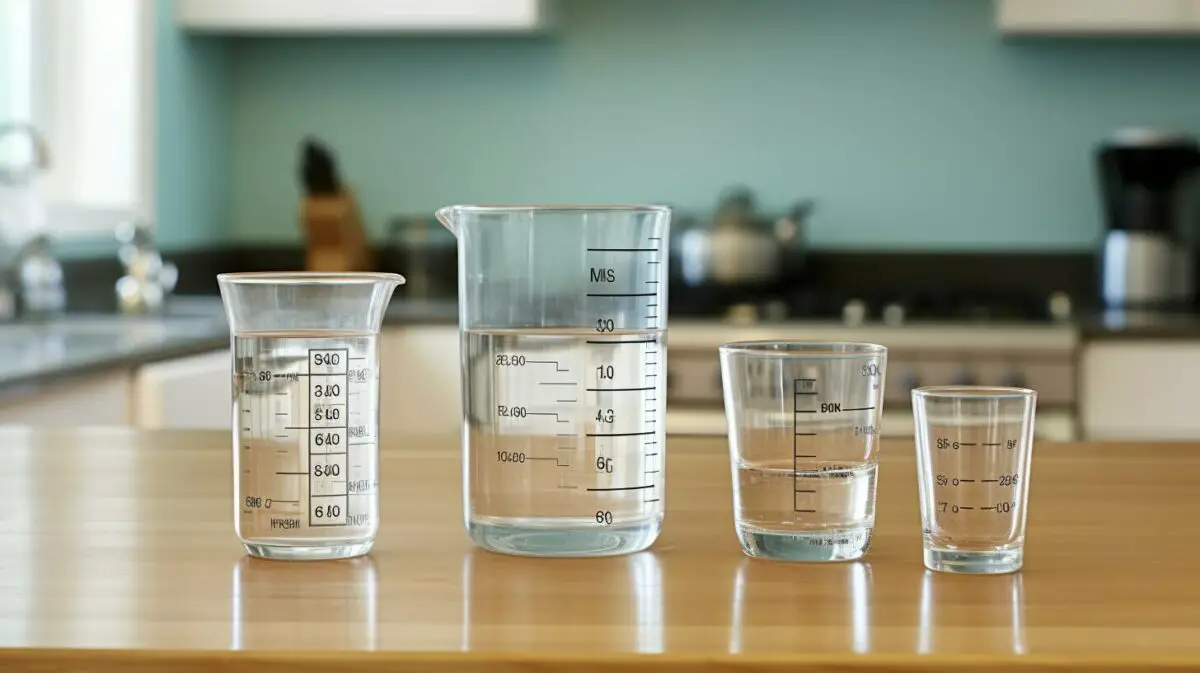
Understanding pint-sized measurements is not only useful for buying ice cream or ordering a beer, but it also provides a valuable reference for cooking and baking. Recipes often call for specific measurements, and knowing that a pint is equivalent to 2 cups can help ensure accurate results. So, the next time you come across a pint-sized container or glass, you’ll know exactly what it means.
Printable Kitchen Conversions Chart
Time to level up your culinary game with our printable kitchen conversions chart, making measurements a breeze in the kitchen. Whether you’re a seasoned chef or just starting out, having a reliable conversion chart at your fingertips is essential for accurately measuring ingredients. No more guesswork or confusion when it comes to translating between cups and pints.
Say goodbye to kitchen mishaps and hello to precision in your recipes. Our user-friendly chart provides a quick reference for converting cups to pints and vice versa. With clear, easy-to-read measurements, you’ll never have to worry about miscalculating your ingredients again.
But our printable kitchen conversions chart doesn’t stop at just cups and pints. It also includes handy conversions for quarts and gallons, giving you a complete toolkit for all your cooking and baking needs. No matter the recipe, you’ll be able to adapt measurements seamlessly.
| Cups | Pints | Quarts | Gallons |
|---|---|---|---|
| 1 | 1/2 | 1/4 | 1/16 |
| 2 | 1 | 1/2 | 1/8 |
| 4 | 2 | 1 | 1/4 |
| 16 | 8 | 4 | 1 |
So why struggle with conversions when you can have all the information you need at your fingertips? Download our printable kitchen conversions chart today and take your culinary skills to the next level. Happy cooking!
Mastering Cups and Pints in Cooking
Now that you have a solid grasp of cups and pints, let’s explore how to apply this knowledge to your culinary creations. Cooking and baking require precise measurements to ensure the perfect balance of flavors and textures in your dishes. Understanding the conversion between cups and pints is essential for following recipes accurately and achieving consistent results.
When it comes to measuring liquid ingredients, a measuring cup with a spout is your best friend. This type of measuring cup allows for easy pouring and precise measurement. Simply fill the cup to the desired level, aligning the liquid with the appropriate markings on the cup. Take care not to tilt or slant the cup, as this can affect the accuracy of your measurement. For dry ingredients, such as flour or sugar, a flat top measuring cup is recommended. Use a spoon or spatula to evenly fill the cup, leveling off any excess with a straight edge.
To help you quickly convert between cups and pints, refer to this handy conversion chart:
| Cups | Pints | Quarts | Gallons |
|---|---|---|---|
| 1 | ½ | ¼ | 1/16 |
| 2 | 1 | ½ | 1/8 |
| 4 | 2 | 1 | ¼ |
| 16 | 8 | 4 | 1 |
It’s also worth noting that a dry pint, often used for measuring fruits and vegetables, is equivalent to 18.6 US fluid ounces or approximately 2.325 cups. So, if a recipe calls for a dry pint of berries, you now know exactly how much to measure.
With this newfound understanding of cups and pints, you can confidently navigate your way through recipes, knowing that your measurements are accurate and precise. So let’s get cooking and baking!
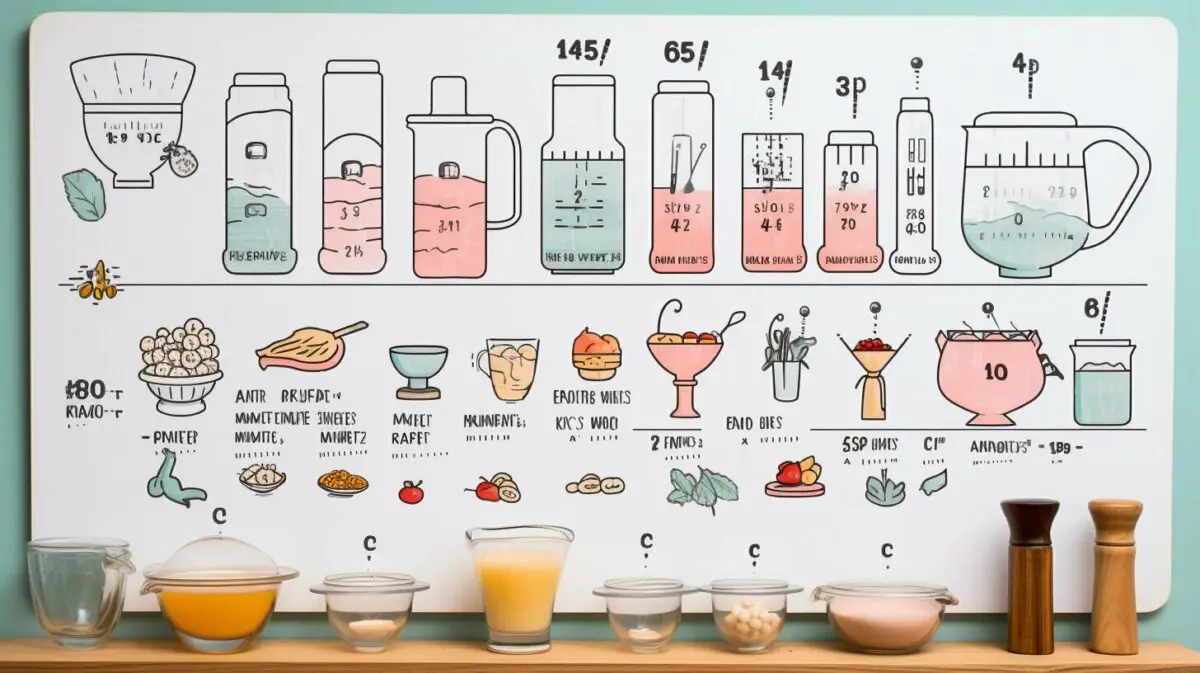
Cups and pints are just the beginning! Let’s dive into other essential measurement units to further expand your culinary expertise. In addition to cups and pints, there are a variety of measurement units commonly used in cooking and baking. Understanding these units and how they relate to each other is crucial for precision in the kitchen.
One common unit is the quart, which is equal to 4 cups or 2 pints. It’s often used in recipes that require larger quantities, such as soups or stews. If you’re planning to make a big batch of your favorite chili, knowing how many quarts you’ll need can save you from any last-minute grocery store runs.
Gallons are another important measurement unit, particularly when cooking or baking for a crowd. A gallon is equal to 16 cups, 8 pints, or 4 quarts. This measurement is commonly used for beverages or when scaling up recipes for parties or events.
When it comes to smaller amounts, fluid ounces, tablespoons, and teaspoons are the go-to units. A fluid ounce is equal to 1/8 cup, 2 tablespoons, or 6 teaspoons. Tablespoons and teaspoons are often used for precise measurements of ingredients like spices or flavorings. It’s important to note that there are 3 teaspoons in a tablespoon.

| Measurement Unit | Equivalent to |
|---|---|
| 1 quart | 4 cups or 2 pints |
| 1 gallon | 16 cups, 8 pints, or 4 quarts |
| 1 fluid ounce | 1/8 cup, 2 tablespoons, or 6 teaspoons |
| 1 tablespoon | 3 teaspoons |
Having a solid understanding of these measurement units will not only ensure accurate and delicious results in your recipes but also make your cooking and baking experiences more enjoyable. So, get familiar with these units, stock your kitchen with the right tools, and let your culinary creativity soar!
Perfecting Your Precision
Precision is key when it comes to achieving culinary perfection. Let’s uncover the secrets of fractions and how they impact your measurements.
When working with recipes, you often come across measurements that require fractions. Understanding the role of fractions in cooking and baking can make a significant difference in the outcome of your dishes. Fractions such as halves, quarters, eighths, and sixteenths are commonly used to measure ingredients accurately.
Let’s take a closer look at how fractions work in measurements. Imagine a recipe calls for 1 1/2 cups of flour. The whole number, 1, represents one full cup, while the fraction, 1/2, indicates half of a cup. By combining these two elements, you can ensure that you’re adding precisely the right amount of flour to your recipe.
Here’s a handy table that illustrates the relationship between common fractions and their corresponding measurements:
| Fraction | Measurement |
|---|---|
| 1/2 | Half (1/2) cup |
| 1/4 | Quarter (1/4) cup |
| 1/8 | Eighth (1/8) cup |
| 1/16 | Sixteenth (1/16) cup |
By becoming familiar with these fractions, you’ll be able to measure ingredients with precision, ensuring that your culinary creations turn out just the way you envision them.

The Importance of Proper Measurement
Accurate measurements are the backbone of culinary success. Discover why precision matters when it comes to ingredients like water, milk, oil, wine, and beer. When it comes to cooking and baking, even a small variation in measurements can significantly impact the taste, texture, and overall outcome of a dish. This is particularly true when working with liquids, where a slight misjudgment can result in an unpleasantly watery or overly rich final product.
To illustrate the significance of proper measurement, let’s take a closer look at some key ingredients. Water, for example, is commonly used in various recipes, such as soups, stews, and sauces. Whether you’re trying to achieve the perfect broth or a well-balanced sauce, accurately measuring the amount of water is crucial. Too much water can dilute flavors, while too little can leave your dish lacking moisture.

Milk is another ingredient that requires precision. Whether you’re preparing a creamy pasta sauce or a delicate custard, using the correct amount of milk is essential. Overpouring could result in a thin and runny sauce, while using too little may lead to a dry and unappealing texture.
When it comes to cooking oils, such as olive oil or vegetable oil, accurate measurement is crucial for achieving the desired taste and texture. Adding too much oil can make your dish greasy, while using too little can affect the flavor and moisture content. It’s important to strike the right balance to ensure a delicious end result.
| Ingredient | Measurement | Effect of Inaccurate Measurement |
|---|---|---|
| Water | Too much or too little | Diluted or dry dish |
| Milk | Overpouring or underpouring | Runny or dry texture |
| Oil | Excess or insufficient | Greasy or bland flavor |
| Wine or beer | Incorrect quantity | Altered taste profile |
Even when it comes to alcoholic beverages like wine or beer, precision in measurement is key. When incorporated into recipes, these ingredients contribute unique flavors and aromas. Using too much can overpower the dish, while using too little may result in a lack of depth and complexity.
By understanding the importance of proper measurement and applying precision to ingredients like water, milk, oil, wine, and beer, you can elevate your cooking and baking to new heights. With accurate measurements, you’ll achieve consistently delicious results that will impress family and friends.
Tips for Efficiently Measuring Liquids
Want to measure liquids like a pro? Discover our top tips for efficiently measuring liquids in your recipes.
1. Use a measuring cup with a spout: When measuring liquid ingredients, it’s best to use a measuring cup with a spout. This allows for easier pouring and helps prevent spills or drips. The spout allows for better control and accuracy when adding liquids to your recipe.
2. Level off the measurement: To ensure precise liquid volume, use a spatula to level off the measurement. Simply pour the liquid into the measuring cup, and then use the straight edge of the spatula to remove any excess liquid and create an even surface. This will help to avoid over or under-measuring and ensure your recipe turns out just right.
3. Be mindful of pouring technique: When pouring liquid into a measuring cup, do so over a stable surface and at eye level. This will help you gauge the amount more accurately and avoid any spills or splashes. Slowly pour the liquid into the measuring cup, stopping just below the desired measurement line. Take your time and be patient to achieve the best results.
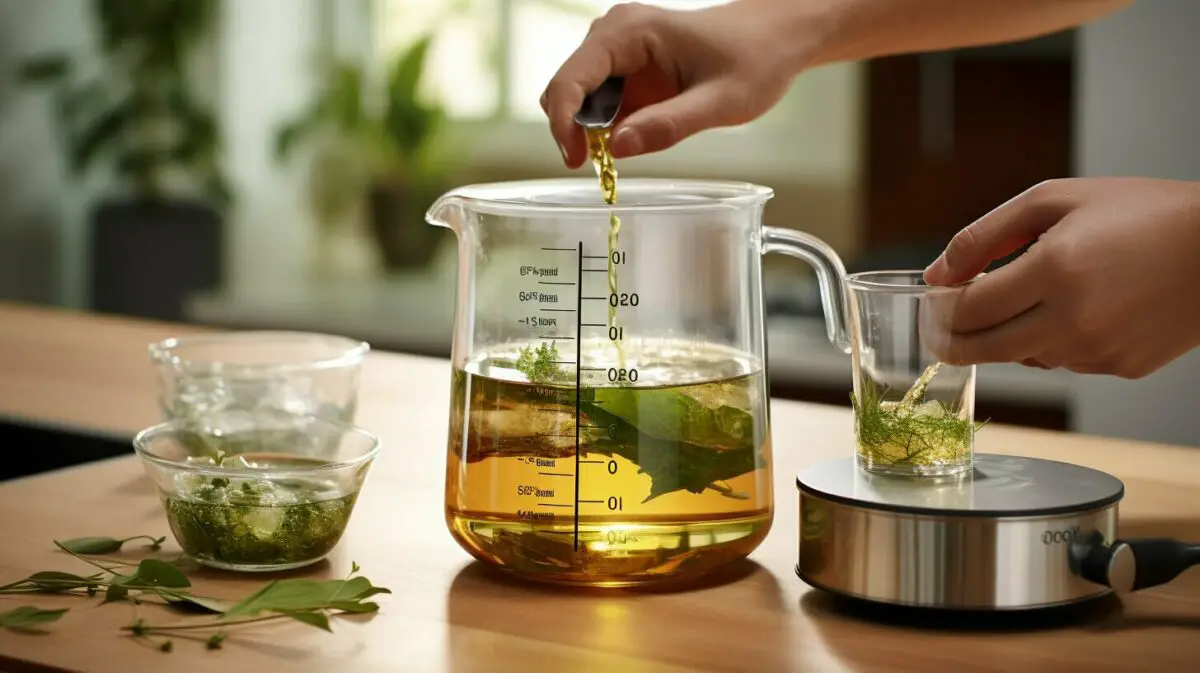
Remember, precise measurements are key to successful cooking and baking. By following these tips, you’ll be able to measure liquids efficiently and ensure consistent results in all your culinary creations.
Enhancing Your Culinary Skills
Congratulations on mastering the art of cups and pints! Now, let’s take your culinary skills to the next level with these tips and recommendations. Aspiring chefs like us are always looking for ways to improve and refine our techniques in the kitchen. Whether you’re a seasoned cook or just starting out, there’s always something new to learn when it comes to cooking techniques and baking methods.
One of the best ways to enhance your culinary skills is by experimenting with different cooking techniques. Have you ever tried sous vide, where food is cooked in a temperature-controlled water bath? It’s a method that can yield perfectly cooked, tender meats and vegetables. Or how about mastering the art of grilling? Grilled dishes are not only delicious but also have that wonderful smoky flavor that’s hard to replicate using any other cooking method.
Baking is another area where you can really expand your culinary skills. From mastering the art of making flaky pie crusts to creating decadent chocolate soufflés, there’s no shortage of baking techniques to explore. Have you ever tried your hand at making homemade bread? Kneading, proofing, and baking your own bread can be a truly rewarding experience. And let’s not forget about the delicate art of pastry making, where precision and technique are key to creating light and airy pastries.
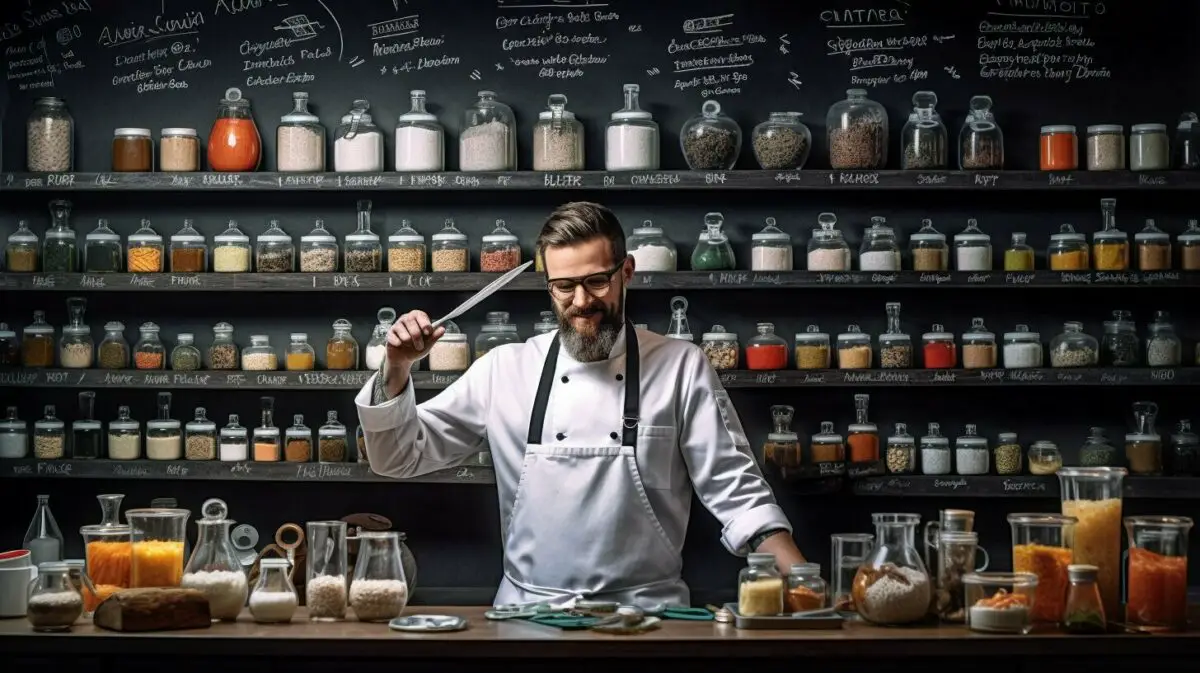
By continuously challenging ourselves to try new techniques and methods, we can expand our culinary repertoire and become more versatile in the kitchen. So, the next time you find yourself in the kitchen, don’t be afraid to step out of your comfort zone and try something new. With practice, patience, and a willingness to learn, you’ll be amazed at the incredible dishes you can create.
Conclusion – How Many Cups Are in a Pint
Armed with the knowledge of how many cups are in a pint, you’re now prepared to conquer any recipe that comes your way. Whether you’re a seasoned chef or a beginner in the kitchen, understanding measurement conversions is essential for successful cooking and baking. By knowing that there are 2 cups in 1 pint, you can confidently navigate recipes and achieve the desired results.
The conversion between cups and pints is a fundamental aspect of culinary measurement. Cups became a standardized unit of measure thanks to Fannie Farmer, who published the influential “Boston Cooking-School Cook Book” in 1896. Since then, cups have become a universal unit for measuring ingredients in recipes. It’s important to note that there is a difference between the US pint and the UK pint, with the UK pint being larger. Paying attention to the correct measurement units is crucial for accurate and delicious outcomes.
When measuring liquid ingredients, it’s best to use a measuring cup with a spout. This design allows for easy pouring and precise measurement. For dry ingredients, a flat top measuring cup is preferred to ensure accurate measuring and consistent results. Having the right tools and techniques for measuring ingredients is an essential step in cooking and baking.
To simplify the conversion process, a conversion chart can be a handy tool in the kitchen. The conversion chart for cups to pints, quarts, and gallons is as follows: 1 cup = ½ pint, 2 cups = 1 pint, 4 cups = 1 quart, and 16 cups = 1 gallon. This chart provides a quick reference for converting between common units of measurement, making it easier to follow recipes and achieve accurate results.
Printable Kitchen Conversions Chart:
| Cups | Pints | Quarts | Gallons |
|---|---|---|---|
| 1 | ½ | ¼ | 1/16 |
| 2 | 1 | ½ | ⅛ |
| 4 | 2 | 1 | ¼ |
| 16 | 8 | 4 | 1 |
Apart from its use in recipes, a pint-sized measurement is commonly found in items like ice cream cartons and glasses of beer. Understanding the conversion between cups and pints can help you make informed choices when it comes to portion sizes and understand the volume you are consuming.
Now that you have a better grasp of measurement conversions, you can confidently explore other culinary measurement units and enhance your skills in the kitchen. Remember, precision is key when it comes to measuring ingredients. Even small variations can greatly impact the taste, texture, and overall success of your dishes. So, embrace the art of measuring and enjoy creating delicious meals and treats!
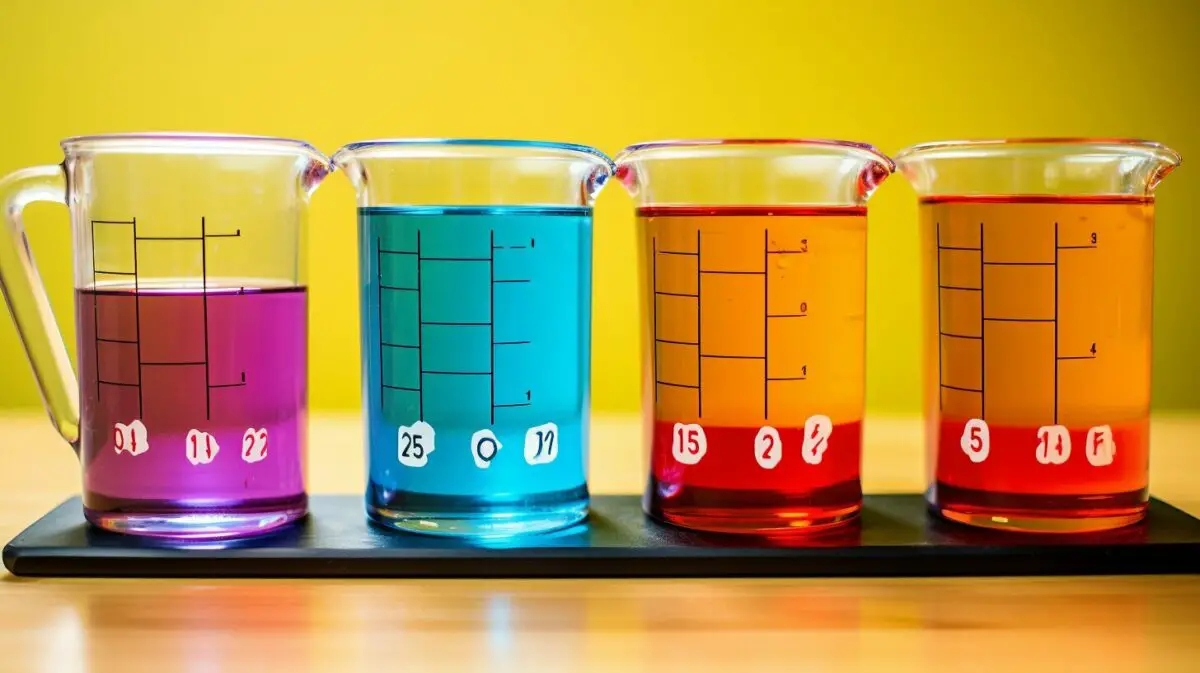
Looking for more measurement conversion tools and resources? Check out these additional sources to expand your culinary expertise.
If you’re in need of a handy tool to convert cups to pints and other common measurement units, there are several online resources available. Websites like ConvertUnits.com and OnlineConversion.com offer simple and user-friendly conversion calculators for various cooking measurements. These tools allow you to quickly and accurately convert between cups, pints, quarts, gallons, and other units, making recipe preparation a breeze.
If you prefer a more traditional approach, you can explore cookbooks that specialize in culinary measurements and conversions. Fannie Farmer’s The Boston Cooking-School Cook Book, originally published in 1896, is a classic reference for American cooking measurements. It provides detailed explanations of cups, pints, and other units of measure, along with a wealth of recipes to put your newfound knowledge to use.
For those who prefer a hands-on learning experience, attending a cooking class or workshop can be a valuable resource. Many culinary schools and local community centers offer classes that cover measurement conversions and other essential culinary skills. These classes provide the opportunity to learn from experienced chefs and fellow cooking enthusiasts, allowing you to improve your skills while having fun in the kitchen.
FAQ – How Many Cups Are in a Pint
Q: How many cups are in a pint?
A: There are 2 cups in 1 pint according to multiple sources. A cup is 8 fluid ounces and a pint is 16 fluid ounces.
Q: What is the difference between the US pint and the UK pint?
A: The UK pint is larger than the US pint. It is important to use the correct measurement for accurate recipes.
Q: How should I measure liquid ingredients?
A: It is best to use a measuring cup with a spout for liquid ingredients to ensure accurate measurements.
Q: How should I measure dry ingredients?
A: For dry ingredients, a flat top measuring cup is preferred to get consistent and precise measurements.
Q: Is there a conversion chart for cups to pints, quarts, and gallons?
A: Yes, the conversion is as follows: 1 cup = ½ pint, 2 cups = 1 pint, 4 cups = 1 quart, and 16 cups = 1 gallon.
Q: What is a dry pint?
A: A dry pint is equivalent to 18.6 US fluid ounces or 2.325 cups. It is commonly used in specific recipes or food packaging.
Q: Where can I find pint-sized measurements?
A: Pint-sized measurements are often found in items like ice cream cartons and glasses of beer.
Q: Is there a printable kitchen conversions chart available?
A: Yes, a printable kitchen conversions chart can be helpful for quickly converting between pints and cups in cooking.
Our Friends
- https://bakeitwithlove.com/how-many-cups-in-a-pint/
- https://moonandspoonandyum.com/a-pint-is-how-many-cups/
Related Recipes:
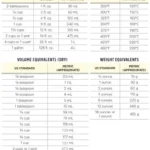 How Many Cups Are in a Liter: Unlocking the Mystery
How Many Cups Are in a Liter: Unlocking the Mystery
 How Many Ounces Are in a Pint? (Perfect Measurement Conversion Guide)
How Many Ounces Are in a Pint? (Perfect Measurement Conversion Guide)
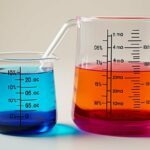 How Many Milliliters in an Ounce? (Perfect Measurement Conversion Guide)
How Many Milliliters in an Ounce? (Perfect Measurement Conversion Guide)
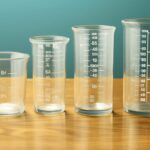 How Many Pints in a Gallon? (Perfect Measurement Conversion Guide)
How Many Pints in a Gallon? (Perfect Measurement Conversion Guide)
 How Many Fluid Ounces in a Cup? (Perfect Measurement Conversion Guide)
How Many Fluid Ounces in a Cup? (Perfect Measurement Conversion Guide)
 How Many Ounces Are in a Quart? (Ultimate Measurement Conversion Guide)
How Many Ounces Are in a Quart? (Ultimate Measurement Conversion Guide)
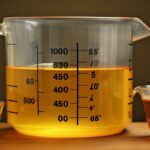 How Many Ounces Are in 750 ml? (Measurement Conversion Guide)
How Many Ounces Are in 750 ml? (Measurement Conversion Guide)
 How Many Cups Are in a Quart? (Perfect Measurement Conversion Guide)
How Many Cups Are in a Quart? (Perfect Measurement Conversion Guide)




